On December 5, 2022, the US Army announced that it had selected a proposal from Bell Textron (as part of Textron Corporation) in a competition for a promising multi-purpose aircraft under the Future Long-Range Assault Aircraft (FLRAA) program to replace the Sikorsky (Lockheed Martin) UH-60 Black Hawk multi-purpose helicopters as part of the US Army aviation. Bell Textron has received a contract from the US Army for the full-scale development of the FLRAA aircraft based on the previously presented Bell V-280 Valour tiltrotor demonstrator. The first flight of a full-fledged Bell Textron tiltrotor prototype under this contract should take place in 2024.
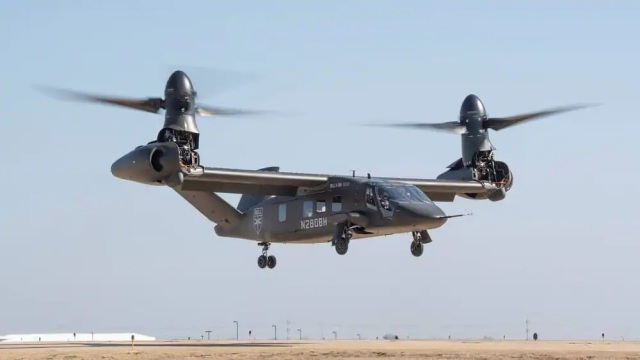
Bell V-280 Valour tiltrotor demonstrator (registration number N280BH), selected by the US Army as a prototype of a promising multi-purpose aircraft under the Future Long-Range Assault Aircraft (FLRAA) program (c) Bell TextronThe requirements of the FLRAA program involve the creation of a medium multi-purpose helicopter to replace the main American helicopter of this class, the Sikorsky UH-60 Black Hawk, and provide for the transportation of 12 fully equipped infantrymen with a cruising speed of at least 230 knots (about 428 km/h) at a range of at least 229 nautical miles (424 km).
The start of serial deliveries of the new aircraft was planned from 2030.
In turn, FLRAA (JMR-Medium / FVL-Medium category) acts as part of a more extensive Future Vertical Lift (FVL) program, implemented since 2004 and providing for the creation of five types of new helicopters or vertical takeoff and landing aircraft to replace the entire fleet of US Army aviation helicopters (OH-58, AH-64, UH-60, CH-47), starting from about 2030-2035.
In 2013, the US Army selected for the first stage of the creation of the JMR TD technology demonstrator under the FLRAA program projects of Bell's V-280 tiltrotor, the Sikorsky and Boeing Consortium's SB>1 Defiant high-speed helicopter, as well as projects of Karem Aircraft's tiltrotor and AVX Aircraft's high-speed helicopter. The last two initiative projects disappeared in August 2014, although AVX stated that it was continuing to develop its aircraft according to the FLRAA competition at its own expense. According to the terms of the preliminary contracts granted in 2014, the first two participants had to provide their first prototype demonstrators by the end of 2017 - but only the V-280 tiltrotor fulfilled this condition.
As a result, in March 2020, the US Army selected two main aircraft proposals - the high-speed SB>1 Defiant helicopter of the Sikorsky and Boeing consortium and the Bell V-280 Valor tiltrotor - to continue full-scale development on a competitive basis under the FLRAA program. The choice was made based on the results of preliminary flight tests of prototype demonstrators of both aircraft within the framework of the Joint Multi-Role (JMR) Technology Demonstrator (TD) project to develop helicopters of a new concept to create a family of promising FVL army aviation helicopters. In both cases, the US Department of Defense funded no more than 20% of the cost of the companies' work on the first phase of JMR TD. In March 2020, the companies that submitted both competing proposals received contracts from the US Department of Defense to continue R&D on the stage of Competitors in the demonstration and risk reduction (CD&RR) - the Sikorsky consortium (part of Lockheed Martin Corporation) and Boeing received a contract worth $ 97 million to continue the development and testing of a high-speed helicopter SB>1 Defiant, and Bell Textron - a contract of $84 million to continue the development and testing of the V-280 Valor tiltrotor.
The first and only prototype demonstrator created by Bell Textron within the framework of JMR TD under the FLRAA program of the V-280 Valor tiltrotor (the so-called Ai Vehicle Concept Demonstrator - AVCD, registration number N280BH) made its first flight on December 18, 2017 in Amarillo (Texas). Now, after almost five years of testing, it has been declared the winner in the FLRAA tender.
The V-280 was actually developed by the so-called Team Valor alliance consisting of Bell Helicopter (now Bell Textron), Lockheed Martin, General Electric, Moog, IAI, TRU Simulation & Training, Astronics, Eaton, GKN Aerospace, Lord, Meggitt and Spirit AeroSystems. The machine is almost entirely made of composite materials and is equipped with two turboshaft engines. The difference between the V-280 and the previous types of tiltrotor planes (in particular, the V-22 Ospey) is the rotation of the engine nacelles with engines, but only the screws, due to the articulated shafts. In December 2020, the V-280 reached a speed of 305 knots (565 km/h), having flown more than 200 hours in 159 flights during tests by that time.
The V-280 prototype demonstrator was equipped with General Electric T64 series engines. The issue of equipping serial samples with a specific type of engine is still unclear. Earlier it was reported that helicopters of any FLRAA proposals should be equipped in a series with two promising General Electric T901 turboshaft engines created under the US Army Future Affordable Turbine Engine (FATE) program and having a take-off capacity of more than 5,000 hp. However, in October 2021, Bell Textron and Rolls Royce announced a decision to replace the V-280 demonstrator Valor T64 engines for Rolls-Royce AE 1107F turboshaft engines, which are a modification of the Rolls-Royce T406/AE 1107C engines used on the V-22 Osprey tiltrotor. The maximum take-off power of the AE 1107F should reach 7000 hp. According to recent reports, the US Army has chosen the V-280 variant with Rolls-Royce AE 1107F engines, which, among other things, also promises unification with the V-22 Osprey tiltrotor fleet.
The cruising speed of a serial machine based on the V-280 should be 280 knots (520 km/ h, hence the index "280"), the maximum is more than 300 knots (560 km/ h). The distillation range is stated at 3,900 km, the range (depending on the load) is from 930 to 1,480 km. The serial tiltrotor V-280 with a crew of four people should carry 14 military personnel. With a declared maximum take-off weight of about 30 thousand pounds (13620 kg; apparently it will actually be more), the device should have a maximum payload of up to 10 thousand pounds (4540 kg).
A competitor of the Bell V-280 in the FLRAA tender, the demonstrator of the SB>1 Defiant high-speed helicopter, presented by the Sikorsky and Boeing consortium, made its first flight on March 21, 2019. SB>1 Defiant uses a new load-bearing scheme developed by Sikorsky, combining coaxial rotors of opposite rotation with a tail pusher screw driven by a rotor gearbox. This scheme was worked out by Sikorsky on an experimental X2 helicopter tested in 2008-2011 and reached a maximum speed of 460 km/h, and on a demonstrator of the 5-ton S-97 Raider helicopter tested since May 2015, having a "passport" maximum speed of 444 km/h and a cruising speed of 407 km/h.
Both competing groups under the FLRAA program also announced that they were working on strike variants of their vehicles to meet the requirements of the US Army under the Capability Set 3 /FVL-Attack subprogram (to replace the Boeing AH-64 Apache combat helicopter). In particular, Bell Textron reported that it is developing a shock variant under the AV-280 index.
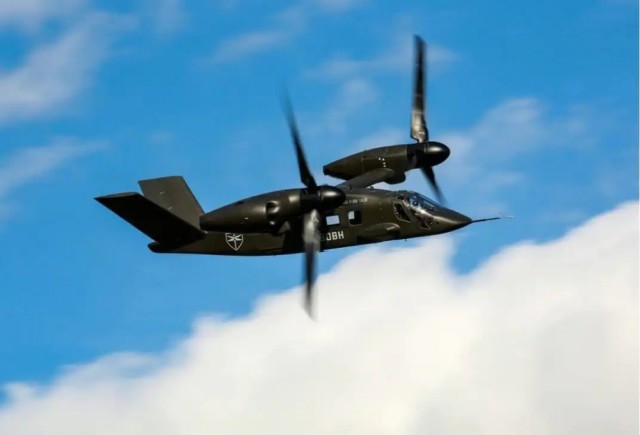
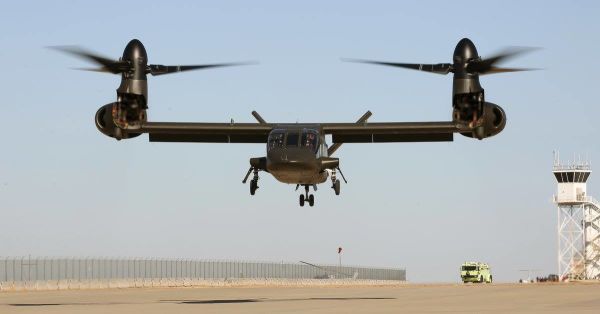
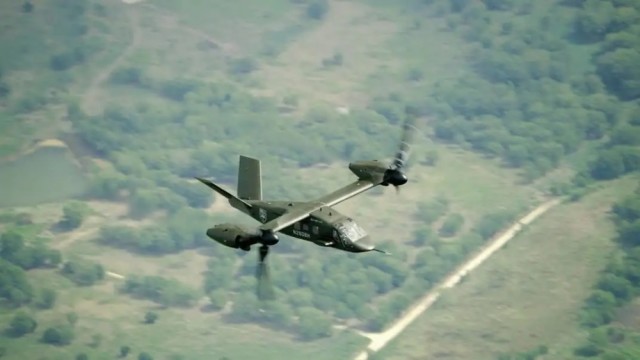
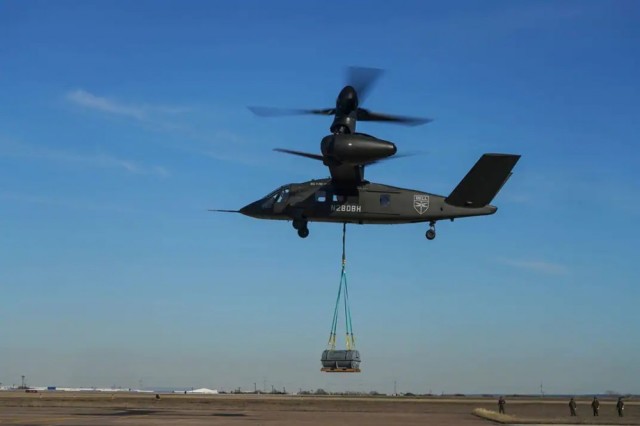
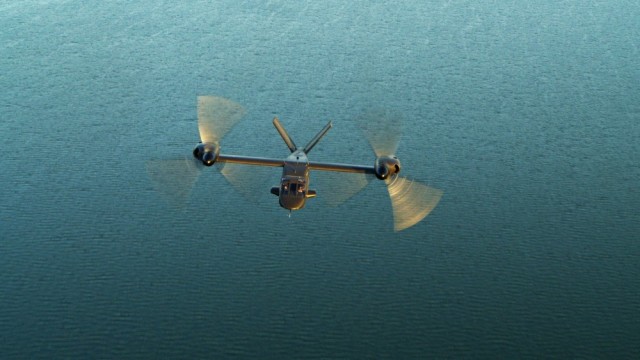
Bell V-280 Valour tiltrotor demonstrator (registration number N280BH), selected by the US Army as a prototype of a promising multi-purpose aircraft under the Future Long-Range Assault Aircraft (FLRAA) program (c) Bell Textron
Video:
